Nurikabe: Trickster That Manifests Itself As Invisible, Impassable Wall In Japanese Old Beliefs
A. Sutherland - AncientPages.com -Nurikabe is among the most popular Yokai monster creatures in Japanese mythology and folk traditions.
Left: Nurikabe, a mythological creature of the Japanese folklore. Montage with a Japanese forest. source; Right: Nurikabe - Painted Bronze Statue on Shigeru Mizuki Road, Japan. sourceLeft: Nurikabe, a mythological creature of the Japanese folklore. Montage with a Japanese forest. source; Right: Nurikabe - Painted Bronze Statue on Shigeru Mizuki Road, Japan. source
It is a yokai, a mysterious force that symbolizes suspicion and strangeness. It defines various supernatural phenomena, objects, and bizarre creatures that dwell in the borderlands and spaces located "in-between."
The belief in a trickster, nurikabe, mainly targets individuals while traveling alone was first recorded in Japan long ago.
In ancient times, it was natural for many travelers to lose their way and feel lost in the darkness unless they possessed their light source.
For many of them, the only light that revealed the path came from the moon and the stars.
In such moments, not only outlaws and wild animals were a potential danger to travelers during the night. With the only goal of blocking roads and delaying foot travel as long as possible, the Yokai nurikabe symbolizes a constant threat to travelers and gives them fear and uncertainty.
The nurikabe can be met on the road anytime, especially at night. Normally invisible, it completely prevents and blocks a path or the main road, forcing travelers to surround it. It can also suddenly appear as an obstacle inside a house.
Any attempt to find a different path or go around, under, or over is in vain. As a wall, the nurikabe could suddenly lengthen or mysteriously rise and move.
It is said that the encounter with a Nurikabe can mean getting lost for a day, and its presence is an unnerving but never deadly experience.
Nurikabe's Appearance Changed With Time
Originally, this yokai was described as an invisible being that manifested as a sizeable invisible wall.
During the Edo period (1603 - 1868), the final period of traditional Japan, artists began to illustrate the creature in a more physical form, giving it a hybrid-like appearance, with arms, legs, and two little eyes.
The nurikabe began to look like a grotesque monster rather than a flat, never-ending wall.
"It is said that if you take a stick and strike at the bottom of it, it will disappear, but if you hit at the top part, nothing will happen."
"A personal experience with a nurikabe-like encounter that occurred when he [Shigeru Mizuki (1922 – 2015), artist and historian] was in New Guinea during World War II. Exhausted and alone, he is walking through the "dark jungle" at night, eager to rejoin his companions and wary of enemies, when suddenly he feels as if he is stuck in "coal tar," unable to move forward or to either side. Completely at a loss for what to do, he sits down to rest for a few minutes, and when he tries to walk again, it is as if nothing at all had happened..." (F.M.Dylan, 'The Book of Yokai')
Written by – A. Sutherland - AncientPages.com Senior Staff Writer
Updated on January 16, 2024
Copyright © AncientPages.com All rights reserved. This material may not be published, broadcast, rewritten or redistributed in whole or part without the express written permission of AncientPages.com
Expand for referencesReferences:
F.M.Dylan, "The Book of Yokai"
More From Ancient Pages
-
 Great Lady Of Champagne – Barbe-Nicole Clicquot Ponsardin: Widow, Mother, Skilled Businesswoman
Featured Stories | Aug 22, 2019
Great Lady Of Champagne – Barbe-Nicole Clicquot Ponsardin: Widow, Mother, Skilled Businesswoman
Featured Stories | Aug 22, 2019 -
 25 Stone Age Caves And Rock Carvings Found In Odisha, India
Archaeology | Mar 30, 2017
25 Stone Age Caves And Rock Carvings Found In Odisha, India
Archaeology | Mar 30, 2017 -
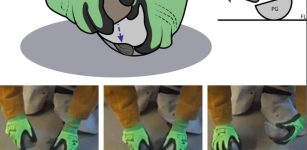 Can Early Stone Tools Offer Proof Our Ancestors Were Becoming Human, Both Mentally And Culturally?
Archaeology | Jul 7, 2022
Can Early Stone Tools Offer Proof Our Ancestors Were Becoming Human, Both Mentally And Culturally?
Archaeology | Jul 7, 2022 -
 Native Americans And European Legends Tell Peculiar Beings From The Sky Still Live On The Earth
Featured Stories | May 16, 2018
Native Americans And European Legends Tell Peculiar Beings From The Sky Still Live On The Earth
Featured Stories | May 16, 2018 -
 10 Ancient Chinese Musical Instruments You Didn’t Know About
Featured Stories | Jan 20, 2016
10 Ancient Chinese Musical Instruments You Didn’t Know About
Featured Stories | Jan 20, 2016 -
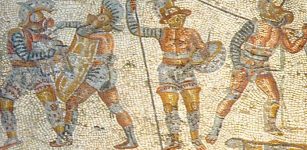 Were There Gladiators In Roman Britain? An Expert Reviews The Evidence
Featured Stories | Mar 14, 2023
Were There Gladiators In Roman Britain? An Expert Reviews The Evidence
Featured Stories | Mar 14, 2023 -
 World’s Oldest Shoe Is 5,000-Year-Old
Archaeology | Jul 10, 2015
World’s Oldest Shoe Is 5,000-Year-Old
Archaeology | Jul 10, 2015 -
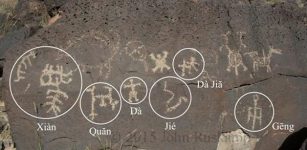 Controversial Evidence – Ancient Chinese Visited America 2,500 Years Ago
Civilizations | Mar 9, 2015
Controversial Evidence – Ancient Chinese Visited America 2,500 Years Ago
Civilizations | Mar 9, 2015 -
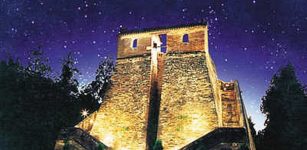 Gaocheng: China’s Oldest Observatory And Large Gnomon Installation Of The Ancients
Ancient Technology | Nov 5, 2016
Gaocheng: China’s Oldest Observatory And Large Gnomon Installation Of The Ancients
Ancient Technology | Nov 5, 2016 -
 Bizarre And Unexplained Phenomenon That Defied The Laws Of Nature
Featured Stories | May 12, 2018
Bizarre And Unexplained Phenomenon That Defied The Laws Of Nature
Featured Stories | May 12, 2018 -
 Strange Tales Of Loughareema – The Vanishing Lake Where People Are Lost
Featured Stories | Jan 8, 2022
Strange Tales Of Loughareema – The Vanishing Lake Where People Are Lost
Featured Stories | Jan 8, 2022 -
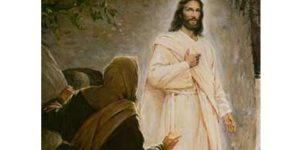 Ancient Manuscript Reveals: Jesus Was Married And Fathered Two Children With Mary Magdalene
Archaeology | Nov 10, 2014
Ancient Manuscript Reveals: Jesus Was Married And Fathered Two Children With Mary Magdalene
Archaeology | Nov 10, 2014 -
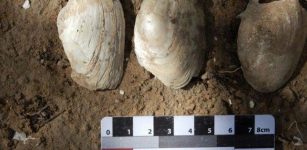 Aboriginals Inhabited South Australia 29,000 Years Ago – New Study
Archaeology | Jul 15, 2020
Aboriginals Inhabited South Australia 29,000 Years Ago – New Study
Archaeology | Jul 15, 2020 -
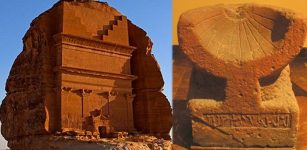 Mada’in Saleh: Spectacular Rock-Cut Tombs And Monuments Reflect Great Skills Of Nabataean Builders
Featured Stories | Aug 18, 2020
Mada’in Saleh: Spectacular Rock-Cut Tombs And Monuments Reflect Great Skills Of Nabataean Builders
Featured Stories | Aug 18, 2020 -
 Evidence Of The Moon-Eyed People – More Clues – Part 2
Civilizations | Dec 29, 2019
Evidence Of The Moon-Eyed People – More Clues – Part 2
Civilizations | Dec 29, 2019 -
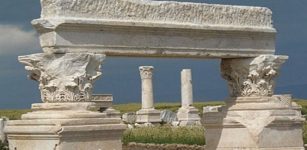 Christian Church And Large House Unearthed In Ancient Laodicea, A Major Hub Of Christianity
Archaeology | Oct 31, 2020
Christian Church And Large House Unearthed In Ancient Laodicea, A Major Hub Of Christianity
Archaeology | Oct 31, 2020 -
 On This Day In History: Battle Of Dormans Was Fought – On October 10, 1575
News | Oct 10, 2016
On This Day In History: Battle Of Dormans Was Fought – On October 10, 1575
News | Oct 10, 2016 -
 Peculiar Unsolved Greek Mystery In New York
Featured Stories | Mar 26, 2024
Peculiar Unsolved Greek Mystery In New York
Featured Stories | Mar 26, 2024 -
 Ancient Hindu High-Tech That Contributed To Modern Science
Civilizations | Nov 11, 2014
Ancient Hindu High-Tech That Contributed To Modern Science
Civilizations | Nov 11, 2014 -
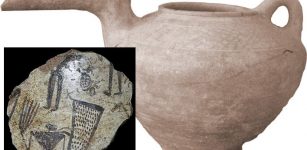 7,000-Year-Old Tepe Ozbaki Mounds Yielded Valuable Relics – But Now The Site Is In Trouble
Archaeology | Nov 25, 2020
7,000-Year-Old Tepe Ozbaki Mounds Yielded Valuable Relics – But Now The Site Is In Trouble
Archaeology | Nov 25, 2020

